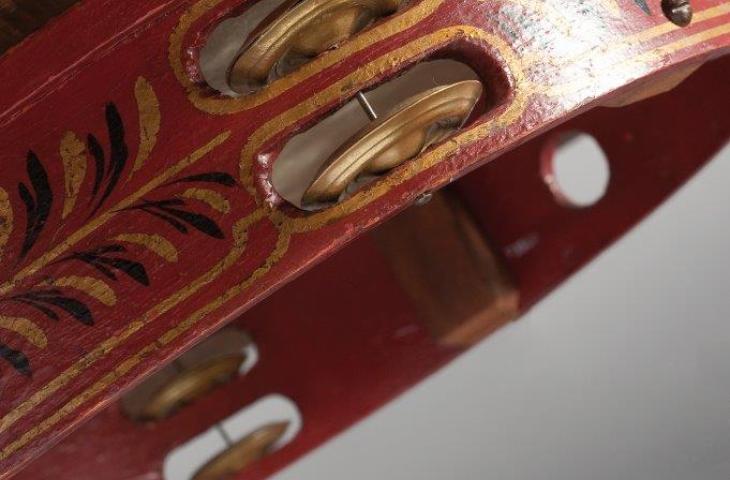Table piano with Turkish pedal

Table piano with Turkish pedal, J. Pfeiffer, Paris, 1818, inv. 3320
Piano table avec pédale turque

Table piano with Turkish pedal, J. Pfeiffer, Paris, 1818, inv. 3320
At the end of the eighteenth century, composers allowed themselves to be inspired by Janissary music, the most well known composition in this respect probably being Mozart’s Turkish March. Janissaries were elite troops under the command of the Ottoman sultan. They wore fine costumes and were famed for their bands. The percussion instruments that they used, such as the big drum, the triangle and the cymbals, not only found their way into the orchestra, but were also integrated into pianos, as in the case of this instrument by J. Pfeiffer, a piano maker from Paris. A tambourine is fixed to its underside and is played via a pedal.
The piano here is a fine example of French Empire style from the beginning of the nineteenth century. The sound-box is finished with a layer of mahogany veneer and rests on four Doric pillars. The capitals and feet of the pillars are decorated with bronze acanthus leaves, leafwork and palmettes, surrounded by volutes. The lock below the keyboard is worked into a bronze decorative item depicting instruments entwined in vines. The keys of this fine keyboard are overlaid with ebony and mother-of-pearl.